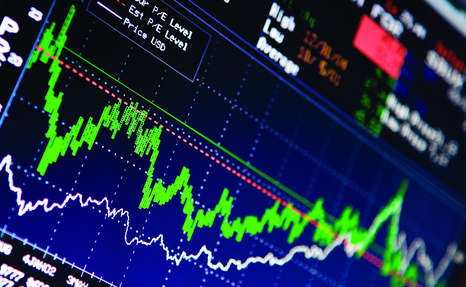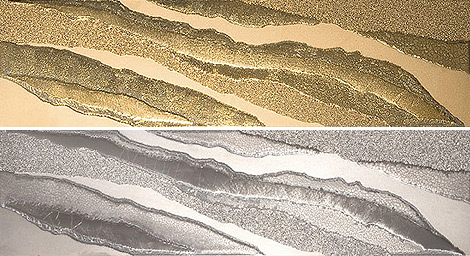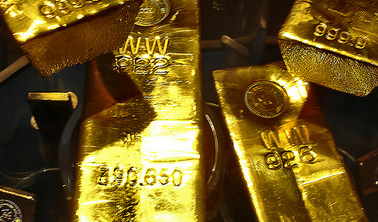Nyheter
David Hargreaves on the price of gold
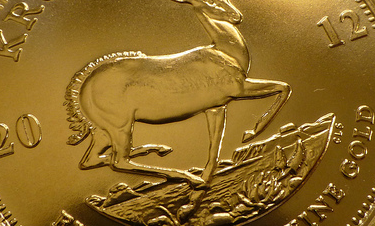
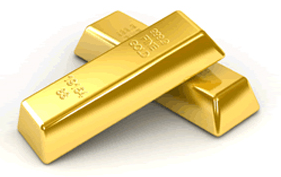 Let’s not speak of it dropping like a stone, but the gold price is coming off rapidly towards our $1200/oz resting place. Not yet at Goldman’s chosen $1050 nor remotely supporting Sprott at $1500 by Christmas. Meanwhile Goldcorp, the 4th largest producer, says it as a company can survive at $900 whilst warning that that would take a lot of production out of the market. Would anyone care?
Let’s not speak of it dropping like a stone, but the gold price is coming off rapidly towards our $1200/oz resting place. Not yet at Goldman’s chosen $1050 nor remotely supporting Sprott at $1500 by Christmas. Meanwhile Goldcorp, the 4th largest producer, says it as a company can survive at $900 whilst warning that that would take a lot of production out of the market. Would anyone care?
Were this any other commodity, the answer would be ‘yes’. Oil is being supported, desperately, at $100/bbl by Saudi Arabia cutting back production, but that is an industrial commodity. Gold complimented only by gemstones, is not.
No more than 10% goes into fabrication where it is both recyclable and sustainable. Because of its unique chemical and physical properties and relative scarcity it dominates the fear factors, of war and financial upheaval. Thus its price is volatile. To the surprise of many, but not WIM, it is on the slide. What will save it? What is its base case?
A world economic recovery of sorts is building, which will require increased financial liquidity. How will you pay me?
Not readily acknowledged is that barter accounts for up to one-third of all trade. After that it is dollars, plain and simple.
Others nibble at the edges but the greenback still has it. We rely for this upon a prosperous USA. When it first gained ascendancy, the dollar was physically gold-backed. It you walked into a New York bank you could demand, in exchange for $35 in notes, an ounce of metal. That persisted from 1935, when the US fixed it, until 1970, when the cost of the Vietnam War put an end to it. At the same time, the other currencies of note had fixed exchange rates to the dollar. Could we go back to that and if so, what would the price of gold need to be? Few dare tread that ground but here goes.
1. The need for money is as a trading lubricant, whether you are selling goods or services.
2. A common currency is vital and its reference to a store of value, equally so. Once the gold datum vanished it was replaced by perceived worth, such as the economic status of the issuing country. This is why the dollar dances to the tune of its employment data.
3. A return to a gold standard might alter all that. Is it possible and what would the price have to be?
Let us look:
- World purchasing power, GDP, is estimated by Wikipedia to be, by 2015, $100 trillion (100×10¹²).
- All gold in the world is estimated at c. 150,000 tonnes.
- Now at $1200/oz (relax we will get there) that is c. $5.4 trillion.
- So to have gold backed currency, we should need 100 ÷ 5.4 x 1200 = $22,000 per ounce. But that is double counting, because for every buyer there is a seller, so money counts twice. Even so, gold would need to be above $10,000 per ounce to become monetised again. Cannot see it happening can you?
4. Now this brings official holdings into play. They rate no more than about 30,000 tonnes worldwide and are being added to but slowly. The rest is stored, for a rainy day, under bedsteads and around body parts or in coins. It would take a lot of prising out.
Conclusion? Gold will continue to register the fear factor, military, economic and political. Right now these are seen to be containable so we feel comfortable with our short term price prognosis. Yet before you tuck yourself smugly into bed tonight, whisper a little prayer: God Bless America.
[hr]
About David Hargreaves
David Hargreaves is a mining engineer with over forty years of senior experience in the industry. After qualifying in coal mining he worked in the iron ore mines of Quebec and Northwest Ontario before diversifying into other bulk minerals including bauxite. He was Head of Research for stockbrokers James Capel in London from 1974 to 1977 and voted Mining Analyst of the year on three successive occasions.
Since forming his own metals broking and research company in 1977, he has successfully promoted and been a director of several public companies. He currently writes “The Week in Mining”, an incisive review of world mining events, for stockbrokers WH Ireland. David’s research pays particular attention to steel via the iron ore and coal supply industries. He is a Chartered Mining Engineer, Fellow of the Geological Society and the Institute of Mining, Minerals and Materials, and a Member of the Royal Institution. His textbook, “The World Index of Resources and Population” accurately predicted the exponential rise in demand for steel industry products.
Nyheter
Australien och USA investerar 8,5 miljarder USD för försörjningskedja av kritiska mineraler
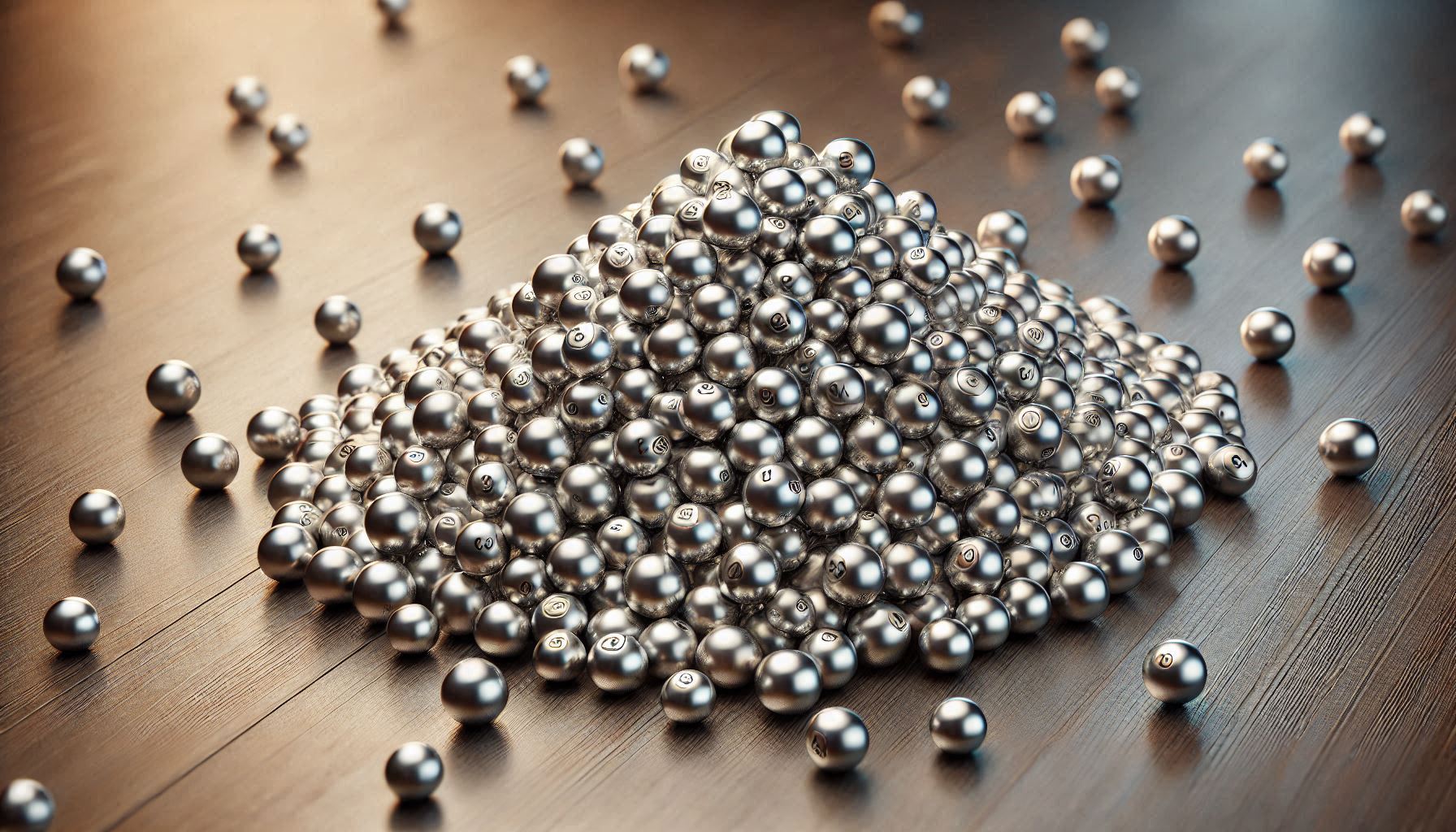
USA:s president Donald Trump och Australiens premiärminister Anthony Albanese undertecknade på måndagen ett avtal som ska tillföra miljarder dollar till projekt inom kritiska mineraler.
Länderna kommer tillsammans att bidra med 1-3 miljarder dollar till projekten under de kommande sex månaderna. Den totala projektportföljen är värd 8,5 miljarder dollar, enligt regeringarna.
Galliumraffinaderi med kapacitet för 5x USA:s efterfrågan
Som en del av avtalet kommer det amerikanska försvarsdepartementet även att investera i ett galliumraffinaderi i västra Australien med en kapacitet på 100 ton per år. För närvarande importerar USA omkring 21 ton gallium, vilket motsvarar hela den inhemska konsumtionen, enligt den amerikanska geologiska myndigheten.
Initiativet kommer samtidigt som Kina har infört exportrestriktioner på vissa mineraler, däribland sällsynta jordartsmetaller, som är avgörande för tillverkningen av elektronik och elmotorer. Gallium används till exempel i mikrovågskretsar samt blå och violetta lysdioder (LED), vilka kan användas för att skapa kraftfulla lasrar.
Nyheter
Vad guldets uppgång egentligen betyder för världen

Guldpriset har nyligen nått rekordnivåer, över 4 000 dollar per uns. Denna uppgång är inte bara ett resultat av spekulation, utan speglar djupare förändringar i den globala ekonomin. Bloomberg analyserar hur detta hänger samman med minskad tillit till dollarn, geopolitisk oro och förändrade investeringsmönster.
Guldets roll som säker tillgång har stärkts i takt med att förtroendet för den amerikanska centralbanken minskat. Osäkerhet kring Federal Reserves oberoende, inflationens utveckling och USA:s ekonomiska stabilitet har fått investerare att söka alternativ till fiatvalutor. Donald Trumps handelskrig har också bidragit till att underminera dollarns status som global reservvaluta.
Samtidigt ökar den geopolitiska spänningen, särskilt mellan USA och Kina. Kapitalflykt från Kina, driven av oro för övertryckta valutor och instabilitet i det finansiella systemet, har lett till ökad efterfrågan på guld. Även kryptovalutor som bitcoin stiger i värde, vilket tyder på ett bredare skifte mot hårda tillgångar.
Bloomberg lyfter fram att derivatmarknaden för guld visar tecken på spekulativ överhettning. Positioneringsdata och avvikelser i terminskurvor tyder på att investerare roterar bort från aktier och obligationer till guld. ETF-flöden och CFTC-statistik bekräftar denna trend.
En annan aspekt är att de superrika nu köper upp alla tillgångsslag – aktier, fastigheter, statsobligationer och guld – vilket bryter mot traditionella investeringslogiker där vissa tillgångar fungerar som motvikt till andra. Detta tyder på att marknaden är ur balans och att kapitalfördelningen är skev.
Sammanfattningsvis är guldets prisrally ett tecken på en värld i ekonomisk omkalibrering. Det signalerar misstro mot fiatvalutor, oro för geopolitisk instabilitet och ett skifte i hur investerare ser på risk och trygghet.
Nyheter
Spotpriset på guld över 4300 USD och silver över 54 USD
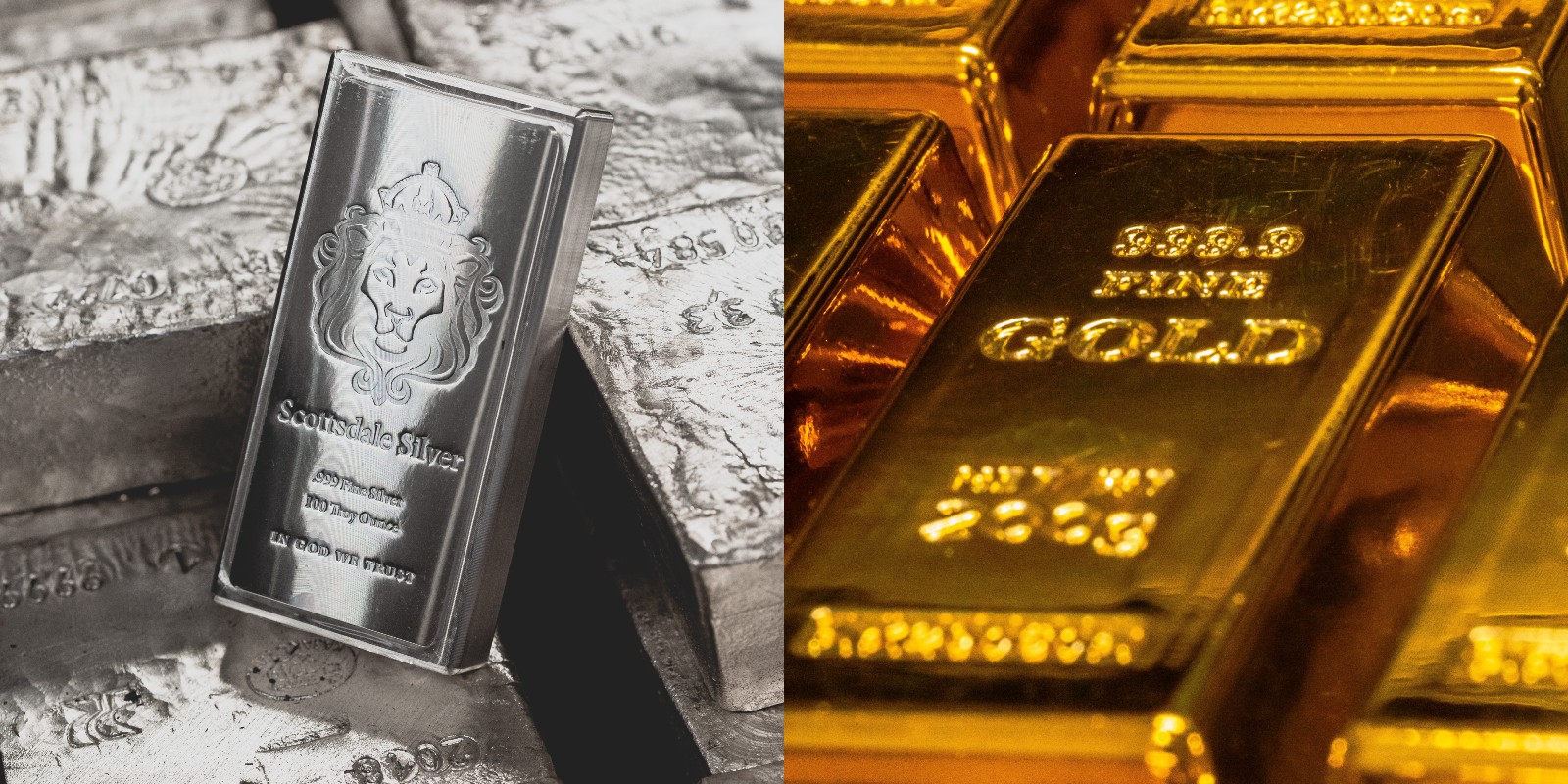
Guldpriset stiger i ett spektakulärt tempo, nya rekord sätts nu på löpande band. Terminspriset ligger oftast före i utvecklingen, men ikväll passerade även spotpriset på guld 4300 USD per uns. Guldet är just nu som ett ångande tåg som det hela tiden skyfflas in mer kol i. En praktisk fördel med ett högre pris är att det totala värdet på guld även blir högre, vilket gör att centralbanker och privatpersoner kan placera mer pengar i guld.
Även spotpriset på silver har nu passerat 54 USD vilket innebär att alla pristoppar från Hunt-brödernas klassiska squeeze på silver har passerats med marginal. Ett högt pris på guld påverkar främst köpare av smycken, men konsekvensen av ett högt pris på silver är betydligt mer kännbar. Silver är en metall som används inom många olika industrier, i allt från solceller till medicinsk utrustning.
-

 Nyheter4 veckor sedan
Nyheter4 veckor sedanOPEC+ missar produktionsmål, stöder oljepriserna
-

 Nyheter4 veckor sedan
Nyheter4 veckor sedanEtt samtal om guld, olja, fjärrvärme och förnybar energi
-

 Nyheter2 veckor sedan
Nyheter2 veckor sedanGoldman Sachs höjer prognosen för guld, tror priset når 4900 USD
-

 Nyheter3 veckor sedan
Nyheter3 veckor sedanBlykalla och amerikanska Oklo inleder ett samarbete
-

 Nyheter3 veckor sedan
Nyheter3 veckor sedanGuld nära 4000 USD och silver 50 USD, därför kan de fortsätta stiga
-

 Analys4 veckor sedan
Analys4 veckor sedanAre Ukraine’s attacks on Russian energy infrastructure working?
-

 Nyheter4 veckor sedan
Nyheter4 veckor sedanGuldpriset uppe på nya höjder, nu 3750 USD
-

 Nyheter3 veckor sedan
Nyheter3 veckor sedanEtt samtal om guld, olja, koppar och stål




